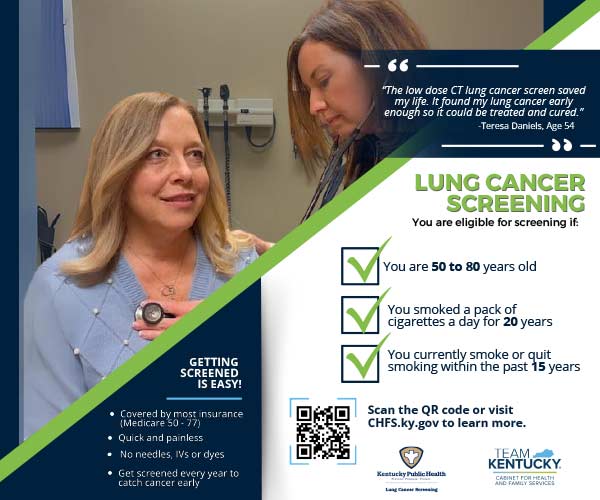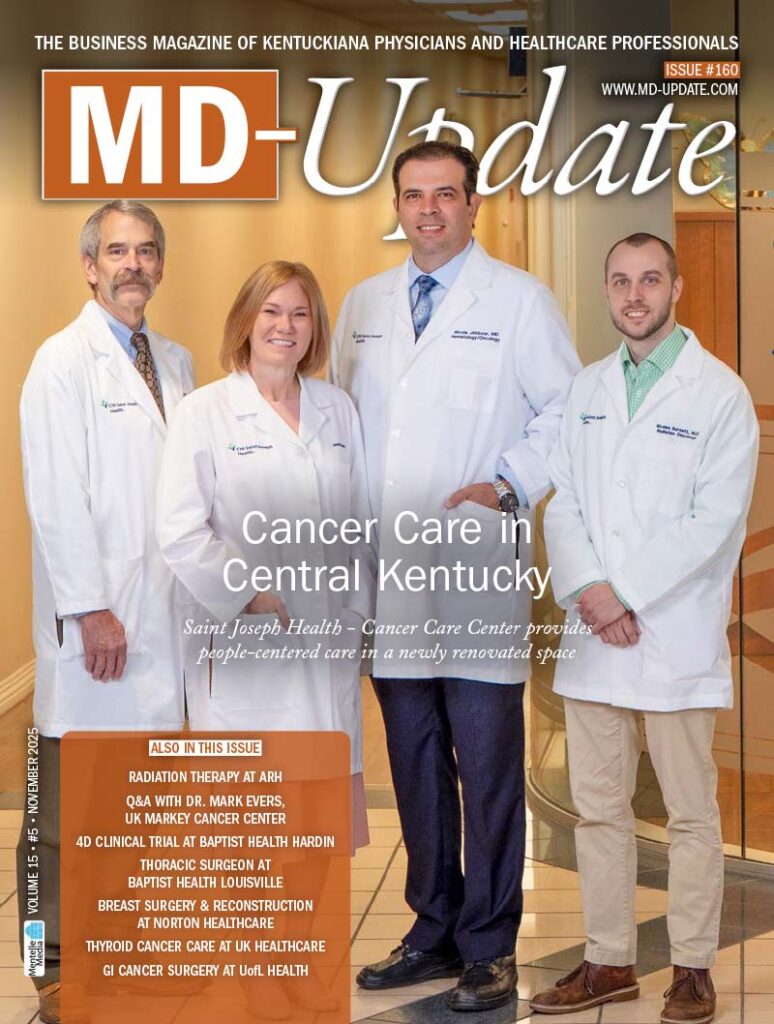From the South Pacific, cardiologist makes London, Kentucky, her family’s home
LONDON Despite medicine being her family’s occupation, Cristina Cabral-Pauig, MD, says her focus is to keep her rural patients in southeastern Kentucky out of the hospital. Pauig, a non-invasive cardiologist with CHI Saint Joseph Medical Group in London, Kentucky, comes from a long line of doctors. Both of her parents are doctors, as are her siblings and their spouses. While they, like her, were trained in the U.S., all the rest returned to practice in the Philippines.
Everything in her family, she says, revolves around healthcare. “Every day, there’s not a moment, there’s not a conversation, that’s not related to healthcare or patients and service,” she says. “My mom was the secretary of health in the Philippines, and everything in our family revolved around healthcare.”
It was in this framework that she picked cardiology as her specialty. Her mother was a cardiologist, and the field had always held a special interest to her. Born in the Philippines, Pauig went to medical school at the University of the Philippines before coming to America to obtain a Master of Public Health at the Harvard School of Public Health. She then did her residency in internal medicine at the University of Connecticut and a cardiology fellowship at the University of Florida in Jacksonville. Medicine, she says, is in her blood.
Pauig says she was recruited to join Saint Joseph London nearly 15 years ago. “I was practicing on an island in the Philippines called Palawan, and a recruiter contacted me to see if I was interested in coming back to the U.S.,” she says. “Once I looked into it, I decided to take the job and I landed here in London.” When she came, her husband came with her. James Pauig, MD, was a neurosurgeon in the Philippines, but when the couple moved to Kentucky, he retired so he could take care of the couple’s three children.
Rural Kentucky wasn’t too different from her home in Philippines, she says. “I’ve lived in the cities where I did my fellowship and residency, but London is similar to the island where I was working before I moved here. It’s an island, and there’s not much there except beaches. Not everything we need is here, but it’s close enough to the city that if we wanted to see or do something, we can go to Lexington.”
A Changing Patient Population
While a good number of her patients are over 60, she says, many are younger. For those who have primarily been sent to her by their primary care physician for complaints of chest pain, her goal is to be proactive. “
I might not be necessarily seeing them because of heart disease, but their primary care physician will want to rule out some heart-related illness,” she says. “My interest
with them is preventative cardiology. I do like to keep my patients out of the hospital.”
And hmoved to Kener patients tend to be women more than men, she says. “What I’m seeing is a lot more women coming in to be seen, which is not what we would normally expect,” she says. “Women do not seek treatment or help right away because they’re busy taking care of the other people in their lives. But when they do come, they could have heart disease.”
Pauig said women tend to come to her at later stages of the disease, and they want to talk to someone who is more knowledgeable about heart disease in women. More than just looking at a few charts, Pauig says she looks into her patients’ backgrounds before they even step foot into her office. Sometimes, she says, she’ll even go into old computer files to see if they have been to someone in the hospital years before. When they step in to see her, she says, she’s ready to ask questions about their symptoms and order some tests.
Checking their background is important because Pauig will often be treating multiple members of the same family. “If I’ve seen their parents, they they’ll come to see me,” she says. “They don’t always have the same disease. If the parent had coronary artery disease, the children may have AFib. What I do see run in a lot of families is high cholesterol. If the parents have high cholesterol, then the patients will have high cholesterol.”
“What I’m seeing is a lot more women coming in to be seen, which is not what we would normally expect.” — Cristina Cabral-Pauig, MD
Prevention Is Key
Diet, exercise, and habits also play an important part.
“There are a lot of issues that are genetic, but for sure the diet does not help,” she says. “And I think a lot of it is smoking and the lack of physical activity. People down here like to hunt, but that’s not necessarily exercise. They will say, ‘Oh, I walk up hills, you know, and I hunt.’ But once they get to the deer stand, they stay there for a while waiting. That’s not much activity after they walk up that hill.”
Getting patients to stop smoking is a key to her treatment. What she wants to do, she says, is stop that next event. “If they already do have cardiac disease, and have had a heart attack, or have stents, we try to prevent a next blockage or needing another stent,” she says. “I try to make sure that they are taking all the medicines they should be taking and that their diabetes is under control. And of course, I try to get them into a smoking cessation program when I can.”
“People down here like to hunt, but that’s not necessarily exercise.” — Cristina Cabral-Pauig, MD
Sometimes, the most important thing is just talking to the patient about the importance of not smoking or of avoiding high fat foods. “Sometimes we think it’s common sense, but I’ve learned if I don’t say it, or when I say it, the patient will say, ‘Oh, I didn’t know that,’” she says. “Those are things they learn about in the conversations we have with them. And that’s important to keeping them healthy.”
And with rural populations, one other challenge is helping elderly patients who may live alone. “Sometimes when patients, especially the elderly, have no one to help them, it’s really hard for them in terms of medications, and even their diet,” she says. “I can advise them to do this or that, but if there’s no one day-to-day helping them, then it’s hard for them to stay on top of it.” Despite the challenges, Pauig says she loves being able to help her patients. “I love what I do and I think I help people by doing what I do,” she says. “If something is hurting, you want to help them, but I also want to help them stay out of the hospital and prevent any heart attacks. I really like what I do.”



